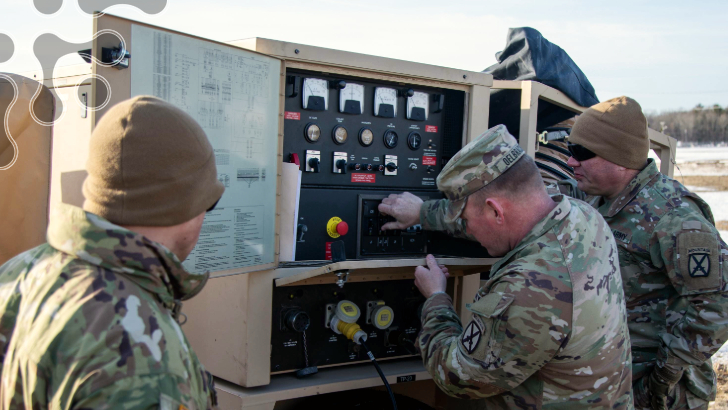

The topic aims to fulfill the need for a Platoon Scale Power Generator (PPG) that will allow Platoons to operate semi-independently over extended periods of time and distance during Large Scale Combat Operations (LSCO). PPG is one part of the Platoon’s overall power generation capabilities. It will convert an energy source, such as fossil fuels and/or alternative fuels, to electric power, to charge and recharge large quantities of a Platoon’s batteries quickly and efficiently. This will minimize the need for support from higher echelons thus, greatly reducing logistical burdens of power and battery related resupply. PPG will reduce the need for the Platoon to carry large quantities of extra batteries.
This topic is accepting Phase I proposals for a cost up to $250,000 for a six month period of performance.
Demonstrate the feasibility of the proposed Platoon Power Generator technology. Identify the technology, fuel choice, along with supporting information. Develop the overall system design, model the size and weight of the system, component choices and sources and perform a comparative analysis of the design metrics with incumbent generator solutions and other technology/fuel implementations from literature. Provide a report on the findings.
Further develop and demonstrate the Platoon Power Generator designed in Phase I. Performers will source and/or build and test key components of the system leading to the demonstration of a TRL 4 breadboard system during phase II performance. Upon a successful demonstration at TRL 4, refinements will be made to improve the system design and address any findings from the breadboard demonstration. Two functional systems will be delivered to the Army for evaluation at the end of the Phase II effort to support 100 hours of testing each, at the nominal power output of the system.
For more information, and to submit your full proposal package, visit the DSIP Portal.
View the SBIR Component Instructions. View the STTR Component Instructions.
SBIR|STTR Help Desk: usarmy.sbirsttr@army.mil

References:
KEYWORDS: Platoon, Power Generator, multi-fuel, methanol, High Energy Aluminum, Alane, JP8, DF2, alternative fuel, PEM fuel cell, Solid Oxide Fuel Cell, Silent, Stirling Engine
The topic aims to fulfill the need for a Platoon Scale Power Generator (PPG) that will allow Platoons to operate semi-independently over extended periods of time and distance during Large Scale Combat Operations (LSCO). PPG is one part of the Platoon’s overall power generation capabilities. It will convert an energy source, such as fossil fuels and/or alternative fuels, to electric power, to charge and recharge large quantities of a Platoon’s batteries quickly and efficiently. This will minimize the need for support from higher echelons thus, greatly reducing logistical burdens of power and battery related resupply. PPG will reduce the need for the Platoon to carry large quantities of extra batteries.
This topic is accepting Phase I proposals for a cost up to $250,000 for a six month period of performance.
Demonstrate the feasibility of the proposed Platoon Power Generator technology. Identify the technology, fuel choice, along with supporting information. Develop the overall system design, model the size and weight of the system, component choices and sources and perform a comparative analysis of the design metrics with incumbent generator solutions and other technology/fuel implementations from literature. Provide a report on the findings.
Further develop and demonstrate the Platoon Power Generator designed in Phase I. Performers will source and/or build and test key components of the system leading to the demonstration of a TRL 4 breadboard system during phase II performance. Upon a successful demonstration at TRL 4, refinements will be made to improve the system design and address any findings from the breadboard demonstration. Two functional systems will be delivered to the Army for evaluation at the end of the Phase II effort to support 100 hours of testing each, at the nominal power output of the system.
For more information, and to submit your full proposal package, visit the DSIP Portal.
View the SBIR Component Instructions. View the STTR Component Instructions.
SBIR|STTR Help Desk: usarmy.sbirsttr@army.mil
References:
KEYWORDS: Platoon, Power Generator, multi-fuel, methanol, High Energy Aluminum, Alane, JP8, DF2, alternative fuel, PEM fuel cell, Solid Oxide Fuel Cell, Silent, Stirling Engine
